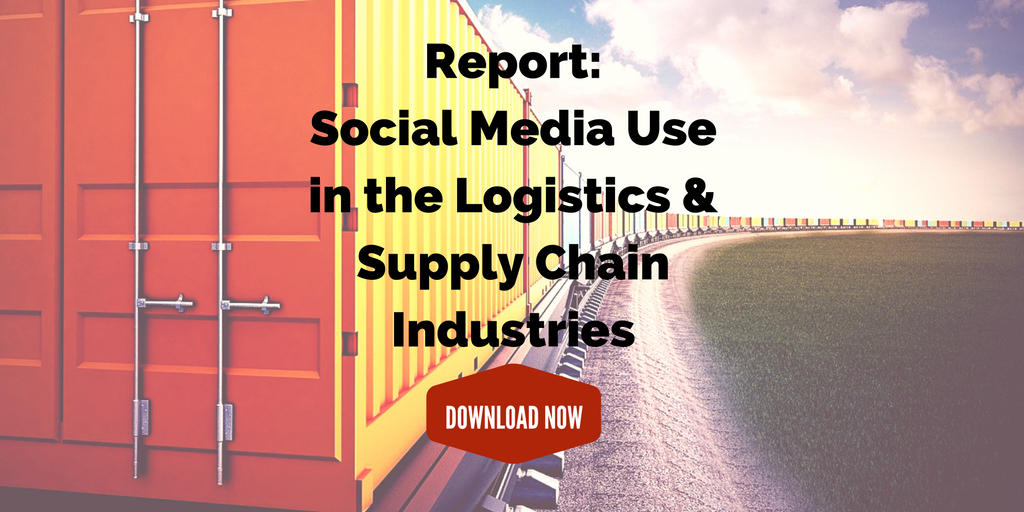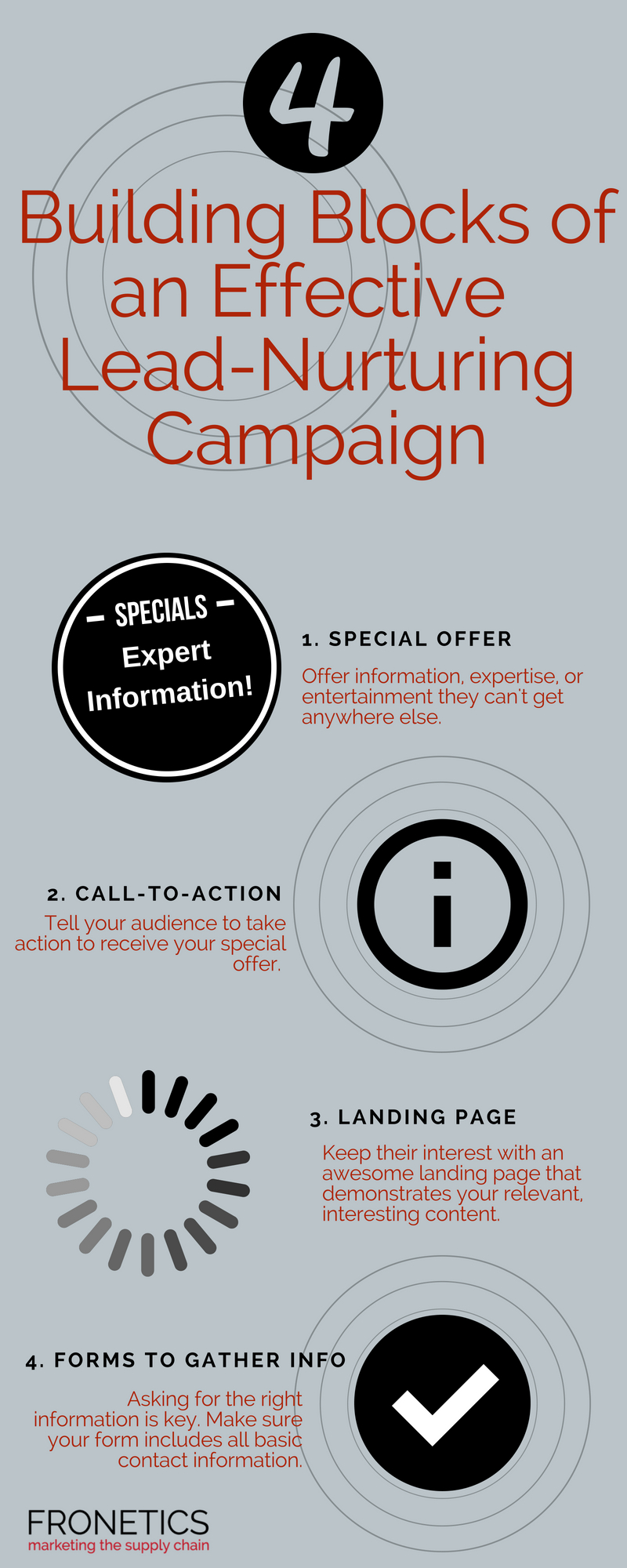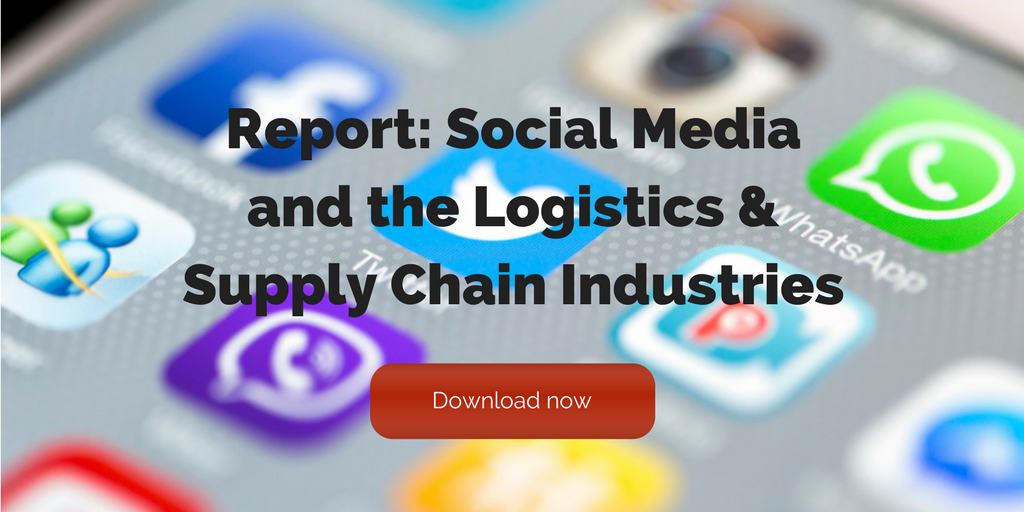
by Fronetics | Mar 15, 2019 | Blog, Marketing, Marketing Automation, Packaging, Supply Chain
Packaging industry marketers: check out these marketing automation tools for email workflows, social media scheduling, and customer relationship management.
Highlights:
- Customers increasingly expect packaging to be personalized to suit their needs.
- Personalize leads’ interactions with your business through automated processes.
- Get help with email workflows, social advertising, and customer relationship management.
Lately it seems like everyone is talking about marketing automation. As B2B buyers increasingly demand personalized experiences through the buyer’s journey, marketers’ jobs are getting tougher, as they need to provide custom lead-nurturing content to all prospects in their databases. This is particularly true for the packaging industry, as B2B customers expect that packaging will be highly personalized to suit their needs.
And that’s where automating marketing tasks can help.
The term “marketing automation” refers to a variety of tools used to automate the process of personalizing leads’ interactions with your business. The sheer variety of these tools can sometimes be overwhelming — so we’ve pulled a few of our favorites in the categories of email workflows, paid advertising, and customer relationship management.
6 marketing automation tools packaging marketers
Email workflows
1. Customer.io
This tool lets you send targeted messages to your customers, crafting them based on how they interact with your business and making personalized messages simple. You can also keep track of conversions and create customer profiles. Our favorite part? It integrates with your mobile app or website, letting you see data in real time and trigger actions by adding in predefined rules.
2. Constant Contact
This powerful tool has some features that are unique — and can take your marketing capabilities beyond the basics. Beyond setting up and managing an automated database, Constant Contact offers Facebook fan promotion, coupons and deals, and event management.
Paid advertising tools
3. AdRoll
This is an extremely effective tool for retargeting customers through re-engagement on Facebook, Twitter, and elsewhere on the web. It offers cross-device and cross-platform retargeting capabilities, as well as flexible segmentation, letting you provide customized experiences that dramatically improve your marketing efficiency. It also offers customized budgeting and full control over ad spend.
Customer relationship management (CRM)
4. Pardot
Pardot is an all-inclusive marketing automation suite, but it’s particularly strong for amping up your engagement with CRM integration. It’s a great tool for helping your sales team shorten the sales cycle. And, in addition to CRM integration, it offers email marketing, lead nurturing, lead scoring, and ROI reporting.
5. Marketo
This cloud-based marketing software lets you drive revenue with lead management and mobile marketing. It not only helps build customer relationships, but it helps you sustain them as well. Best of all, you can try it out for free until you’re sure it’s right for your business.
Bonus all-in-one tool
6. HubSpot
HubSpot is an inbound marketing tool that lets you generate leads, close deals, and manage your sales pipeline from start to finish. It integrates beautifully with a content marketing strategy, with the goal of turning outbound leads into inbound ones. It includes revenue reporting, custom-event reporting, custom-event automation triggers, predictive-lead scoring, contacts and company reporting, and event-based segmentation.
What marketing automation tools are you using to create efficiencies in your packaging business?
Related posts:


by Fronetics | Jan 9, 2019 | Blog, Content Marketing, Logistics, Marketing, Supply Chain
Email subject lines can make or break an email marketing campaign. Read on for our dos and don’ts for creating an effective subject line.
Email marketing is an unquestionably effective content marketing tactic for B2B businesses. But too often, marketers lose out on potential benefits by focusing too much on internal details while overlooking the importance of the subject line.
It may seem silly, but think about it: When you see an email pop up in your inbox, how do you decide whether or not to open it? If you’re like 47% of all email recipients, you decide to open it based on the subject line alone. And furthermore, if you’re like a whopping 69% of email recipients, you report it as spam purely based on the subject line.
[bctt tweet=”47% of all email recipients decide to open email based on the subject line alone. And if you’re like a whopping 69% of email recipients, you report it as spam purely based on the subject line.” username=”Fronetics”]
Here are some email subject line dos and don’ts.
7 email subject line dos and don’ts
1. Do: be specific; Don’t: be vague
It’s tempting to think that the mystery of a vague subject line will pique the interest of the recipient. But think again. An overly vague teaser is simply annoying and uninteresting. Make sure that the subject line gives an accurate preview of what recipients will find when they open the email.
2. Don’t: send incessant reminders
While it’s great to stay in the forefront of your prospects’ minds, sending too many reminders about the same subject or offer is just plain annoying. Not only that, if your audience doesn’t mark you as spam, their email system might automatically do so anyway.
3. Do: send regular messages at strategic times
It’s true that constant reminders are not your friend — but that doesn’t mean you shouldn’t be sending out regular messages to the various segments of your email list. Just make sure your subject lines show variation based on the content, or else your recipients will think they’re receiving the same message over and over again.
4. Don’t: Use all capital letters
If you’re sending someone a message in all capitals, it’s the equivalent of yelling at them. Too many marketers think that the caps-lock is a sure way to capture a reader’s attention. In fact, it’s much more likely that they will send you straight to the trash.
5. Do: Personalize
Personalizing marketing emails increases open rates, click-throughs, and revenue. But it’s not as simple as just addressing recipients by name. We’ve written in detail about how to personalize marketing emails, but suffice it to say that personalized subject lines mean that users are 22% more likely to open your emails. The more information you track in your email database, the easier it will be to target your emails to your readers, making them feel that they are being personally addressed.
6. Don’t: Be sloppy
You’d be surprised how often people make these 5 email subject line mistakes. For example, misspellings, poor grammar, and excessive use of punctuation can make your open rates plummet. Check out our list — and don’t fall into the trap!
7. Do: Use Psychology
If you’re not up on the latest internet jargon, we’ve got one for you: FOMO, the “fear of missing out,” can be a powerful motivator of user behavior. While vague subject lines won’t work, using phrases like “last day to enter…” or “don’t miss out…” make your readers more likely to open your emails, simply because of FOMO.
A bad email subject line is a sure way to cripple otherwise well-thought-out email marketing tactics. But a good subject line can boost engagement, increase open and click-through rates, and spell more conversions.
Related posts:


by Fronetics | Jul 25, 2018 | Blog, Content Marketing, Logistics, Marketing, Social Media, Strategy, Supply Chain
Here are 4 components of an effective lead-nurturing campaign that will entice your potential customers and have them moving down the sales funnel.
Your content marketing objectives really come down to one basic goal: to generate a high number of quality leads. These leads will help drive tomorrow’s revenue and increase sales. In fact, 85% of B2B marketers say lead generation is their most important content marketing goal.
[bctt tweet=” 85% of B2B marketers say lead generation is their most important content marketing goal.” username=”Fronetics”]
As more and more buyers discover brands before they are ready to purchase, an essential function of any marketing department is lead nurturing. That is, moving leads through the sales funnel by leveraging what’s known about their needs and online behavior.
Marketo, a marketing software company, describes lead nurturing as being “personalized, adaptive, and able to listen and react to buyer behavior in real time.”
We know that marketers need to focus their lead nurturing strategy on multi-channel engagement. This includes utilizing email, social media, blogs, and video to interact with potential customers. A multi-channel lead nurturing strategy is essential for companies looking to optimize their user experience and bring in high-quality leads.
With so many variables contributing to a productive lead-generation campaign, it can be challenging to pinpoint what differentiates a successful campaign from a mediocre one. Here are four tools that will help you deliver a series of targeted messages across multiple touch points and platforms to help solidify your lead-nurturing strategy and increase your quality leads.
4 building blocks of an effective lead-nurturing campaign

(Made with Canva)
Takeaway
Successful lead nurturing is really about utilizing all the tools at your disposal to meaningfully connect with your leads in order to build trust and establish credibility. Using these four key points, marketers can start building on their lead-generation efforts as they guide potential customers on their journey to becoming a client.
And don’t forget: Asking for the right information is key! If you want to nurture high-quality leads, you need to make sure you’re capturing relevant, helpful information along the sales journey.
Related posts:


by Fronetics | Jun 28, 2018 | Blog, Content Marketing, Current Events, Marketing, Social Media
Also in social media news June 2018: Instagram released ranking criteria for its algorithm, Apple expands advertising businesses with a new network for apps, and Facebook is cracking down on new requirements for custom target audiences.
Summer is in full swing, and so are the most popular social media platforms. Facebook, Instagram, Snapchat, and even Apple are rolling out updates to make their platforms more user- and, more importantly, business-friendly. After a rocky spring with the Facebook scandal, social media apps are working overtime to make their relationships with businesses more transparent and overall user experiences more personalized.
[bctt tweet=”After a rocky spring with the Facebook scandal, social media apps are working overtime to make their relationships with businesses more transparent and overall user experiences more personalized.” username=”Fronetics”]
With transparency on the forefront, this month’s social media news is heavy with social media apps making updates that increase user privacy and subsequently, increase user engagement. Here’s what’s happening with your favorite platforms this month.
Here’s your social media news for June 2018.
Facebook enforces new requirements for custom target audiences
Facebook has released new requirements for advertisers creating custom audiences from user files. Advertisers will now have to identify where their audience’s information was obtained when they create new customer files. “Starting July 2, we will require advertisers to specify the origin of the audience’s information when a business uploads a new audience. When uploading a customer file, advertisers will need to indicate whether the information was collected directly from people, provided by partners, or a combination of the two,” writes Facebook. These new updates will help advertisers provide more transparency for users and increase advertising efficiency.
Google increases transparency over Google Ads
Google rolled out new settings to its ad features, making it clearer to users how Google Ads are customized specifically to them. Google is also sharing why users see certain ads by introducing “Why this ad?”, a new link that appears on ads. “The new Ad Settings and updates to Why this ad? provide you with more transparency and control over your Google ad experience than ever before. With these improvements, you can browse the web confidently knowing that you have the information and control to make Google work better for you.”
Instagram announces criteria for its algorithm
Instagram revealed the three most important factors that feed into its algorithm to determine which posts appear in a user’s feed. According to TechCrunch these factors include: interest, recency, and relationship. After ditching its ranking system in 2016 for an advanced algorithm, Instagram now says the new system has contributed to the platform’s soaring popularity, allowing users to see 90% of their friends’ posts.
Apple expands advertising business with new network for apps
Apple is looking to grow its advertising business by working with social media apps to distribute ads across their collective platforms. “Apple would share revenue with the apps displaying the ads, with the split varying from app to app,” MarketWatch shares on its website. Apple is hoping these partnerships will increase its advertising business by selling promotional ads in its App Store.
Facebook is expanding ads to include Marketplace
Facebook’s Marketplace is a part of Facebook that allows users to buy and sell products and recent updates allowed businesses to get in on the action. Facebook’s newest update allows businesses to purchase product ads that will appear in the Marketplace along with similar products and services. The ads have been tested among specific brands in the past few months and the results show increased purchases and year-over-year returns on ad spending. “Thread Wallets, an accessories company, generated more than 300 purchases while increasing its year-over-year return on ad spend by 41% after adding Marketplace as a placement for its conversions campaigns,” writes Facebook on its business site. In the coming weeks, advertisers targeting audiences in the U.S. and Canada can start using Marketplace ads.
Instagram introduces long-form video
Until now, all Instagram videos were limited to one minute, and Stories were limited to 15 seconds. But the Wall Street Journal reports that Instagram is looking to expand into long-form video, up to one hour in length. Though this hasn’t been confirmed by Instagram or Facebook, the WSJ writes the expansion will initially only be available in vertical video, meaning a video shot by a phone camera or on a computer, but eventually the app could include production videos and even programming.
Related posts:


by Fronetics | May 31, 2018 | Blog, Content Marketing, Current Events, Marketing, Social Media
Also in social media news May 2018: Pinterest gives businesses more control over how users view their content, Snapchat offers skip-free ads, and Facebook is re-opening application reviews and chatbot development.
At the beginning of May, Facebook hosted its annual developer conference, Facebook F8. This year’s keynote speaker, CEO Mark Zuckerberg, focused on rallying developers to continue building for his platform, despite the recent controversies.
Facebook also used its annual conference to kick off some new initiatives, including:
- Clear History: a new privacy feature allowing users to delete data Facebook has collected from sites and apps that use its ads and analytics tool. This will allow users to scrub some of their browsing history from Facebook’s data store.
- Instagram’s new video chat: Instagram’s messaging has lacked video chat capabilities, until now. The new feature was created to win over users who currently prefer Snapchat for video chat.
- Translation abilities on Messenger: Facebook is slowly integrating translation abilities for Messenger, starting with English to Spanish translation, with hopes to expand to other languages in the future.
[bctt tweet=”Clearly WhatsApp is doing something right, announcing their stories feature, WhatsApp Status, officially reached 450 million daily active users. ” username=”Fronetics”]
But Facebook isn’t the only social media giant looking to gain new traction with users. WhatsApp, Snapchat, and even Pinterest have been making changes to increase user engagement. And clearly WhatsApp is doing something right, announcing their stories feature, WhatsApp Status, officially reached 450 million daily active users. This is a tough reality for Snapchat, who previously dominated the video stories space, but now only has a fraction of the daily users as WhatsApp.
Here’s your social media news for May 2018.
Marketers prepare for European Union’s GDPR laws
The European Union’s General Data Protection Regulation (GDPR) is a new set of laws that provide “greater protection for consumers’ privacy and set strict guidelines on how personal information is collected, stored, and used.” These radical new laws will dramatically affect the way user data is collected and stored by businesses in Europe, including U.S. companies that do business abroad. The laws officially go into effect on May 25, 2018, nearly two years after they were initially passed by the Parliament. Fronetics is staying on top of these changes and will provide updates on any changes that occur.
Facebook clarifies advertising processes and data practices
At Facebook’s F8 conference, the platform explained the basics of how Facebook advertising works and answered tough questions about its advertising practices. Vice President of Ads, Rob Goldman, writes “We do not tell advertisers who you are or sell your information to anyone. That has always been true. We think relevant advertising and privacy aren’t in conflict, and we’re committed to doing both well.” He also highlighted how users can control, manage, and even delete their data from the site to opt out of ads.
Snapchat tests 6-second unskippable ads
On May 15, Snapchat started running six-second unskippable ads on select Snapchat shows. Once reluctant to run ads on their app, Snapchat is opening up to the idea after a tough year since becoming publicly traded. The new ad format called, yes, Commericals is hoping to boost advertising revenue and increase business opportunities.
Pinterest rolls out new business profile and insights
Pinterest just announced its new business profile that allows brands to “highlight the content that they want customers to see first such as their latest pins, specific boards, or most recent Pinterest activity on their site.” The new feature also allows brands to create statistics reports, including the total number of people who saw or shared your pins in the past month. These new changes are expected to go live in the next couple of months.
Facebook reopens app review process
In light of the Cambridge Analytical scandal, Facebook had stopped all application review and chatbot development efforts to focus on its privacy and data policies. But they have officially reopened the app review process “after making some changes to make it more comprehensive and grounded on ensuring that each of [its] APIs creates value for people, is transparent, and builds trust.” The improvements to Facebook’s platform policies and programs hope to encourage continued use of its products, including chatbots.
Instagram experiments with improved explore section
Not far off from Facebook’s tried, and failed, Explore Feed, Instagram is now testing a redesigned Explore tab for users to discover new content and organize that content into relevant topic channels. The new tool “is still personalized for you, but the content is now organized into topic channels, so you can browse across your interests and go deeper on any area you’d like.” The Explore tab will be available in the next few weeks.
Instagram adds improved tools for businesses to connect with customers
Instagram is adding the ability for businesses to receive new messages from customers. Originally these messages were filed into a pending folder and now they’ll be available directly in a business’ inbox. The app is also added improved call-to-action buttons, “which allow users to complete transactions through popular third-party partners without having to leave Instagram.” Additional features include the ability for businesses to star and filter customer messages.
Related posts:










